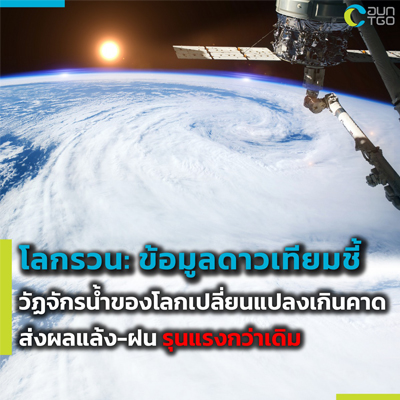Article
Climate Change: The world's water cycle has changed more than expected, resulting in more severe droughts and rains

Climate change has disrupted the global water cycle. This is the process by which water vaporizes in the atmosphere and condenses into rain, which has begun to turn around rapidly and became more intense. The resulting in more drought-affected areas with water scarcity. The monsoon rain will be more intense than before and more severe flooding. The results of the above study are the latest analysis of satellite data by a team of researchers from several Spanish academies of marine sciences. The report was published in the journal Scientific Reports, found that measuring the salinity or concentration of sea surface minerals using electronic equipment attached to the buoyancy in the ocean tolerances were significantly lower than actual salinity values. The researchers identified an abnormal increase in sea surface salinity is the point to global warming and more rainstorms in the near the equator and the two poles.
The fluctuating water cycle is the cause of climate change in the form called “wet areas will be more wet, Dry areas will become even more drier”. Water resources in different parts of the world will also be affected. The water in freshwater sources is diluted with minerals and becomes tasteless because of the increase in rainfall. As for seawater, the higher the concentration of minerals and becoming more and more salty as the water evaporates. coughing at a higher rate This is consistent with predictions with global climate models which had previously predicted that for every 1 degree Celsius the world warms. This would result in a 7% more rapid and intense water cycle, meaning wet areas would experience a 7% heavier rainfall and arid areas would experience drier conditions from the original a 7%.
Reference
https://www.bbc.com/thai/international-61299458

